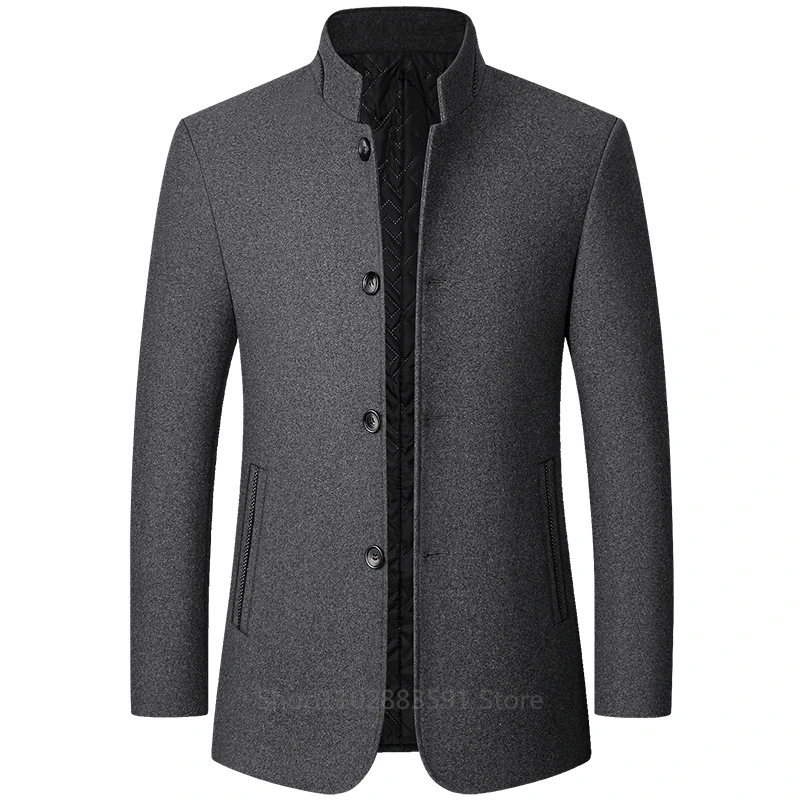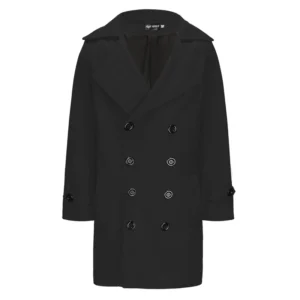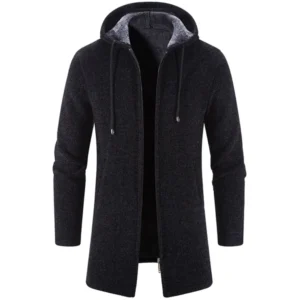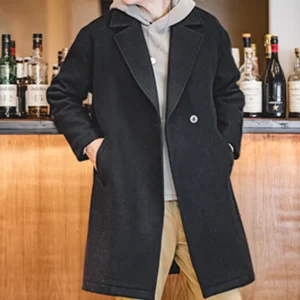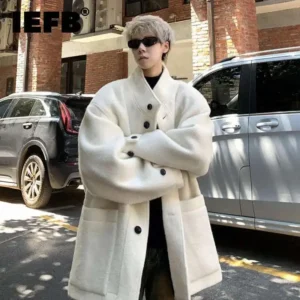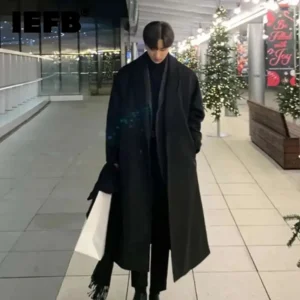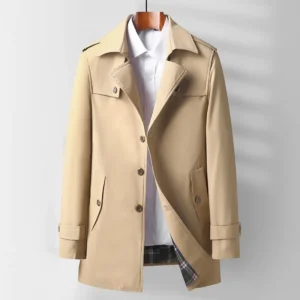The Versatility Champion: Why a Grey Overcoat Should Be Your Wardrobe Essential
Few garments combine sophistication and versatility quite like the grey overcoat. This timeless piece has evolved from its formal roots to become the modern man’s secret weapon for effortless style in virtually any setting. The beauty of men’s grey overcoats lies in their remarkable ability to bridge the gap between formal occasions and casual everyday wear.
Grey as a color choice represents the perfect middle ground in men’s outerwear. Neither as severe as black nor as casual as tan, grey provides a neutral canvas that works harmoniously with virtually every color in your wardrobe. This versatility explains why the overcoat has transcended its origins as strictly formal attire to become a staple in the casual rotations of style-conscious men worldwide.
What makes the grey overcoat particularly special is its transformative quality. Throw it over even the most basic outfit—jeans and a t-shirt, for example—and suddenly your look takes on an air of intentional sophistication. This elevation effect is why so many style icons rely on men’s overcoats as signature pieces for creating memorable impressions.
From a practical perspective, investing in a quality grey overcoat offers exceptional value. When considered on a cost-per-wear basis, few garments deliver better returns. A well-chosen overcoat can remain in your rotation for years, even decades, adapting to evolving style preferences and seasonal needs.
Key benefits of the grey overcoat:
* Creates instant polish for casual outfits
* Provides versatile styling options across seasons
* Delivers excellent investment value through longevity
In the sections that follow, we’ll explore everything you need to know about selecting, styling, and maintaining the perfect grey overcoat for your everyday life—from choosing the right shade and material to mastering both casual and elevated pairings.
Decoding Shades of Grey: Choosing the Right Tone for Your Style
Not all grey overcoats are created equal. The spectrum of grey shades offers distinct visual effects and styling possibilities, making your selection an important consideration for maximizing versatility.
The shade you choose significantly impacts how your overcoat pairs with the rest of your wardrobe. Light grey projects a fresher, more contemporary feel that works beautifully in spring and summer months. Mid-grey represents the ultimate versatile option, seamlessly transitioning between formal and casual settings. Charcoal grey leans more formal but still offers tremendous styling range while providing a slimming visual effect many men appreciate.
For those seeking added visual interest, herringbone coat patterns introduce texture and subtle complexity to the classic grey palette. These patterned options often become conversation pieces while maintaining the versatility that makes grey overcoats so practical.
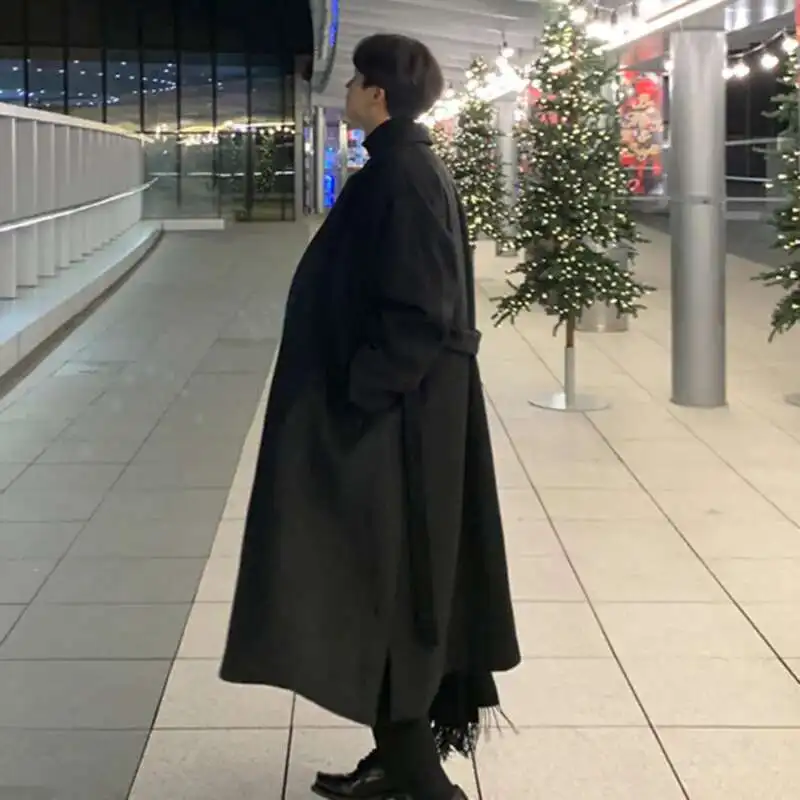
When selecting your shade, consider both your existing wardrobe colors and your skin tone. Lighter greys tend to create stronger contrast with darker skin tones, while deeper charcoals often complement fair complexions. Also important is understanding how different lighting conditions affect grey tones—a mid-grey coat might appear lighter in bright daylight but richer in evening settings.
For first-time overcoat buyers, a medium to dark grey often provides the most styling flexibility. These middle-range shades hide minor wear and stains better than lighter options while remaining appropriate for both daytime and evening wear.
The perfect coat length for height also interacts with your choice of grey shade. Lighter greys can sometimes emphasize length, while darker shades often create a more compact visual impression—considerations worth keeping in mind depending on your proportions and style goals.
| Shade | Characteristics | Best For | Styling Versatility |
|---|---|---|---|
| Light Grey | Fresh, modern, shows texture well | Spring/summer, younger men, casual settings | Pairs well with vibrant colors, shows wear more easily |
| Mid-Grey | Ultimate versatility, balanced tone | Year-round wear, wardrobe staple | Works with virtually everything, hides mild wear |
| Charcoal | Formal-leaning, sophisticated, slimming | Evening wear, professional settings | Excellent with both light and dark colors, hides wear well |
| Patterned Grey (Herringbone, Check) | Visual interest, textural complexity | Statement piece, creative industries | More casual vibe, conversation starter |
Material Matters: Fabrics That Balance Elegance and Everyday Function
The fabric of your grey overcoat determines not just its appearance but its functionality for everyday wear. The right material strikes a delicate balance between structure, comfort, and durability—essential qualities for a garment you’ll potentially wear daily during colder months.
Wool overcoats represent the gold standard for most men. Pure wool offers natural temperature regulation, keeping you warm without overheating, while maintaining its structure beautifully over time. The insulating properties of wool make it particularly suitable for colder climates, though the weight of the wool matters significantly. Heavier wools (20-24 oz) provide substantial warmth for truly cold environments, while lighter options (16-20 oz) offer greater versatility across seasonal transitions.
For those seeking enhanced durability and often a more accessible price point, wool blend coats offer compelling advantages. These blends—typically wool mixed with polyamide or other synthetic fibers—can improve wrinkle resistance and overall durability while reducing weight. Quality wool blends retain much of pure wool’s thermal properties while often requiring less meticulous care.
Wool and wool blend advantages:
* Natural temperature regulation
* Excellent structure retention
* Classic, refined appearance
* Impressive longevity with proper care
Cashmere and luxury blends represent the premium end of overcoat materials. These fabrics offer incomparable softness against the skin and a subtle luster that communicates quality. However, they typically demand more careful maintenance and command significantly higher prices. For elevated casual looks that prioritize comfort, a cashmere-wool blend provides an excellent middle ground between luxury and practicality.
Technical and performance fabrics have gained popularity for everyday overcoats, particularly for men in rainy or variable climates. These modern materials can offer water resistance, enhanced durability, and easier care requirements. The trade-off comes in the form of a potentially less classic appearance, though high-end technical fabrics can closely mimic the look of traditional wool while adding weather protection.
When selecting your overcoat fabric, consider your local climate, how frequently you’ll wear the coat, and your willingness to perform regular maintenance. A quality wool or wool blend represents the most versatile starting point for most men, offering the ideal combination of classic appearance and everyday functionality.
Nailing the Perfect Fit: Finding Your Everyday Silhouette
The most expensive overcoat in the world will look unremarkable if the fit isn’t right. For everyday wear, finding the perfect balance between comfort and silhouette is especially crucial.
The first rule of overcoat fit is shoulder alignment. The seam where the sleeve meets the body should sit right at the edge of your natural shoulder. Too narrow, and you’ll experience restriction when layering; too wide, and you’ll look like you’re wearing someone else’s coat. This fundamental aspect of fit creates the foundation for how the entire garment drapes on your body.
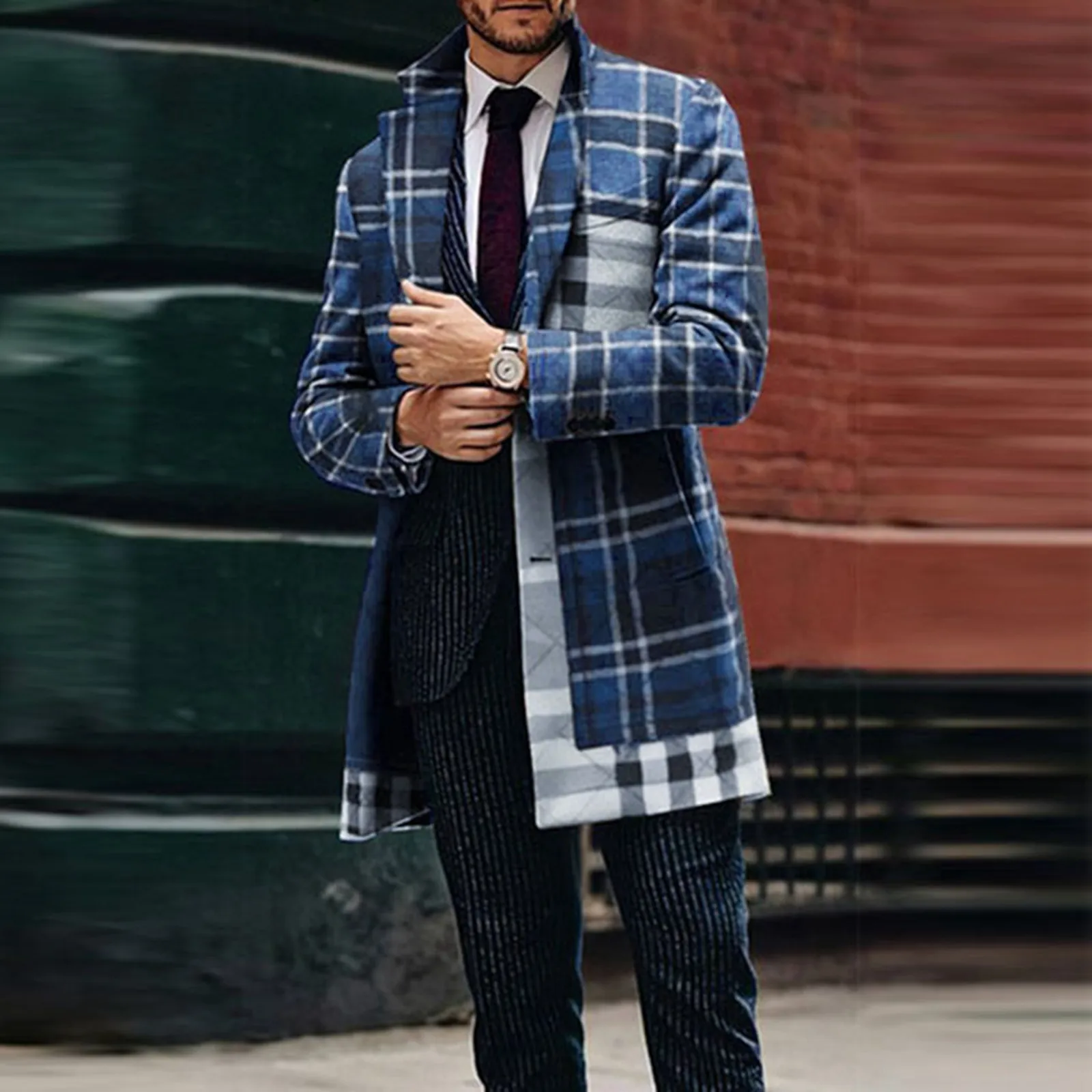
Proper coat length for men has evolved with changing fashion trends, but for maximum everyday versatility, the sweet spot typically falls around mid-thigh. This length works well across different body types while providing practical coverage without restricting movement. Taller men may prefer slightly longer coats, while shorter men often find that coats ending just above the knee create the most flattering proportion.
The chest and waist measurements deserve careful attention for both appearance and comfort. You should be able to comfortably close the coat while wearing a suit jacket or heavy sweater underneath without strain across the shoulders or pulling at the buttons. A good rule of thumb is to ensure you can fit a closed fist between your chest and the buttoned coat.
For everyday wear, the choice between structured and relaxed silhouettes depends largely on your personal style and typical wardrobe. A more structured coat with defined shoulders and suppressed waist pairs beautifully with tailored clothing but can sometimes look overly formal with very casual attire. Conversely, a slightly relaxed silhouette adapts more readily to jeans and casual wear while still maintaining a put-together appearance.
Double-breasted overcoats traditionally project more formality than their single-breasted counterparts, but contemporary styling has largely bridged this gap. The key for casual double-breasted wear is ensuring the coat isn’t too fitted—a slightly relaxed cut helps counterbalance the inherently more formal button arrangement.
For online purchases where trying on isn’t possible, pay close attention to the garment measurements and compare them to coats you already own. Focus particularly on shoulder width, chest circumference, and sleeve length. Remember that coat length for different body types varies, so understanding your proportions helps tremendously when selecting the right size.
Mastering Casual Pairings: Jeans, T-shirts, and Relaxed Staples
The true versatility of a grey overcoat reveals itself when paired with casual everyday staples. This high-low contrast—formal coat with relaxed basics—creates a compelling visual interest that feels both intentional and effortless.
Denim forms the foundation of most casual overcoat pairings. Dark wash jeans offer the most versatile option, creating a clean look that bridges the gap between the coat’s refinement and denim’s casual nature. Medium washes introduce a more relaxed feel perfect for weekend wear, while light washes create stronger contrast that works particularly well with charcoal grey coats.
The key to successful t-shirt and overcoat combinations lies in quality and fit. A well-fitting t-shirt with some substance to the fabric maintains the balance between casual and refined. White, grey, and black tees offer the cleanest look, while deep burgundy, navy, or forest green introduce subtle color that complements grey’s neutrality beautifully.
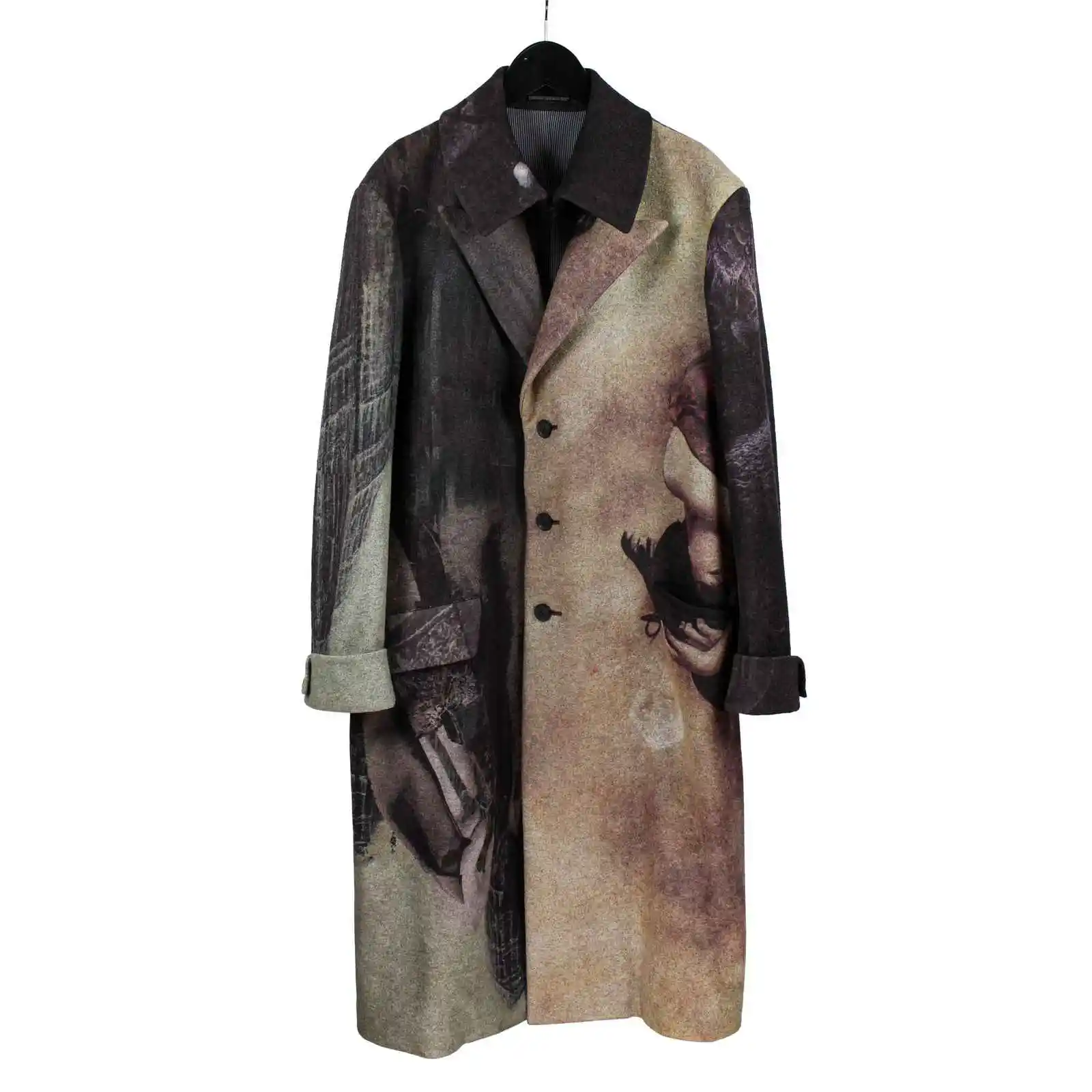
Hoodies and sweatshirts under overcoats create the ultimate high-low juxtaposition that’s become a staple of contemporary men’s style. This combination works best when the hoodie is relatively slim rather than overly bulky, maintaining a clean line under the coat. Neutral-colored sweatshirts create a cohesive look, while occasionally introducing a controlled pop of color adds personality.
The choice between short and long coat styles significantly impacts casual styling. Shorter overcoats (ending around the hip) often pair more naturally with very casual outfits, while longer styles can sometimes require more thoughtful balance to avoid looking mismatched.
Everyday outfit formulas to try:
* Light grey overcoat + white t-shirt + dark wash straight-leg jeans + white leather sneakers
* Charcoal overcoat + heather grey hoodie + black jeans + combat boots
* Mid-grey herringbone overcoat + navy sweatshirt + medium wash relaxed jeans + retro runners
For proportional balance, consider the silhouette from head to toe. Slightly more relaxed jeans often counterbalance the structure of an overcoat better than extremely slim cuts. Similarly, the coat length that creates a taller appearance works in harmony with the overall outfit proportion.
Casual overcoat styling succeeds when it looks intentional rather than like you simply threw your dress coat over gym clothes. The key is maintaining a thoughtful balance where each element—though casual—shows quality and consideration.
Elevated Casual: Chinos, Button-downs, and Smart-Casual Combinations
When the occasion calls for something slightly more polished than jeans and a t-shirt but still distinctly casual, the grey overcoat truly shines as a versatile layer. This “elevated casual” zone represents perhaps the most natural habitat for everyday overcoat styling.
Chinos and casual trousers form the foundation of these smart-casual combinations. Olive, navy, and khaki chinos create a sophisticated palette that works harmoniously with any shade of grey overcoat. The subtle texture difference between the smooth coat and the more casual trouser fabric adds visual interest without requiring bold patterns or colors.
Button-down shirts—particularly Oxford cloth varieties—strike the perfect balance for everyday overcoat pairings. These shirts bring just enough formality to complement the coat while maintaining a relaxed feel appropriate for daily wear. Light blue represents the most versatile option, while white offers a cleaner look. For more seasonal charm, chambray and subtle flannel patterns work beautifully under grey overcoats.
Dress coats can still work beautifully in casual contexts when the accompanying pieces are selected thoughtfully. The key is creating enough contrast between the coat’s formality and the rest of your outfit to make the combination feel intentional rather than mismatched.
Knitwear serves as the ideal middle layer between shirt and overcoat, adding both warmth and textural complexity. Crew neck sweaters in merino wool offer clean simplicity, while chunkier fisherman knits or cardigans create more visual interest. The turtleneck-overcoat combination has become a contemporary classic that eliminates the need for a scarf while framing the face elegantly.
Smart-casual outfit formulas:
* Charcoal overcoat + light blue Oxford button-down + olive chinos + brown Chelsea boots
* Light grey overcoat + burgundy turtleneck + navy wool trousers + minimal sneakers
* Mid-grey overcoat + grey sweatshirt + camel chinos + desert boots
The beauty of these elevated casual combinations lies in their adaptability. Small adjustments can tune the formality up or down to suit different environments. Swap the sneakers for leather boots to elevate the look, or switch the button-down for a quality t-shirt to move in a more casual direction.
Understanding the relationship between coat length and style helps tremendously when creating these balanced outfits. The coat should feel like a natural extension of the overall look rather than a formal piece awkwardly paired with casual elements.
Footwear Focus: Completing Your Look from the Ground Up
Footwear selection can make or break an overcoat outfit. The right shoes or boots create cohesion between your coat and the rest of your look, while mismatched footwear can undermine even the most thoughtfully assembled combination.
For casual overcoat styling, clean sneakers have become the go-to option for many men. White leather minimalist sneakers offer tremendous versatility, creating a crisp contrast with the coat’s formality while maintaining a sophisticated overall impression. Retro-inspired trainers add a sportier touch that works particularly well with more relaxed overcoat silhouettes. For those cold, wet days, technical sneakers can provide practical performance without sacrificing style.
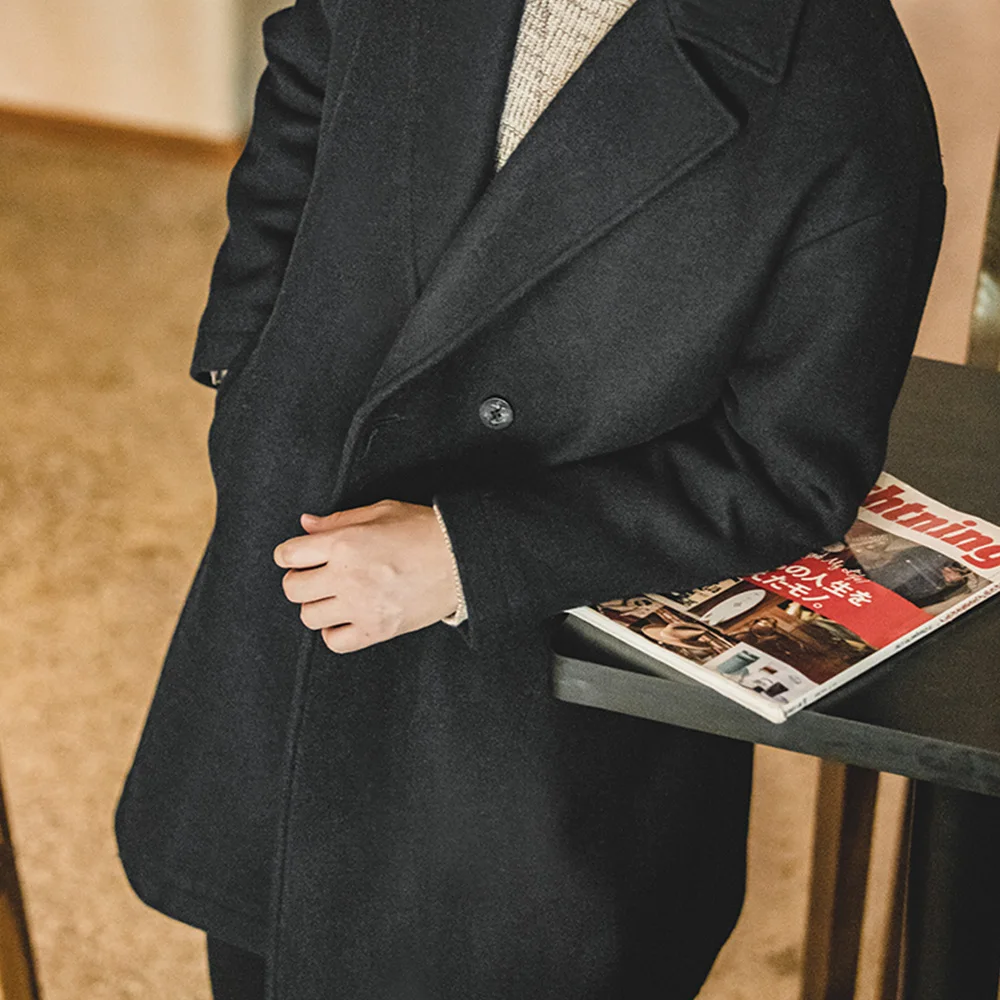
Boots represent perhaps the most natural footwear pairing for overcoats, especially during colder months. Chelsea boots bridge formal and casual contexts beautifully, particularly in brown suede or leather. Chukka and desert boots lean slightly more casual, complementing jeans and chinos perfectly. For harsher weather, work boot styles like moc-toes or cap-toe service boots add rugged functionality while maintaining style coherence.
The visual weight of your footwear should generally align with the weight of your coat. Substantial boots balance nicely with heavier wool overcoats, while lighter shoes may pair more harmoniously with less structured or lighter-weight coat options. This balance creates visual coherence from top to bottom.
Color coordination between footwear and overcoat needn’t be exact but should exist within a complementary family. With grey overcoats, both black and brown footwear work well—black creating a sharper, more urban look, and brown introducing warmth that softens the overall appearance. The winter coat length guide provides helpful context for creating proper proportion between coat and footwear.
For slightly elevated occasions, loafers and derby shoes offer a middle ground between formal and casual. These versatile options work wonderfully with chinos and wool trousers while maintaining enough refinement to honor the overcoat’s inherent elegance.
The Art of Color Coordination: Building Palettes Around Your Grey Overcoat
One of grey’s greatest strengths as a color is its exceptional neutrality. This quality makes grey overcoats remarkably adaptable to various color palettes, allowing for both subtle sophistication and strategic pops of color depending on your preference.
Understanding basic color theory helps maximize your grey overcoat’s versatility. As a neutral, grey pairs beautifully with virtually any color, but certain combinations create particularly harmonious results. Blues of all shades—from navy to powder blue—form natural partnerships with grey, creating a cool, sophisticated palette. Earthy tones like olive, camel, and burgundy introduce warmth that balances grey’s coolness while maintaining an organic, natural feel.
For those who prefer a minimalist aesthetic, monochromatic grey outfits offer elegant simplicity. Combining different shades and textures of grey—from light heather to deep charcoal—creates subtle dimension without introducing additional colors. This approach works particularly well in urban environments and more formal settings.
Black overcoats provide a more formal alternative to grey, but lack some of the versatility across different lighting conditions and color combinations. Where black can sometimes create stark contrasts, grey offers softer transitions that often prove more forgiving and adaptable.
Seasonal color considerations can extend your grey overcoat’s wearability throughout the year. In fall and winter, pairing with deeper, richer colors like forest green, burgundy, and mustard creates harmony with the season’s natural palette. For spring transitions, lighter blues, soft pinks, and pale yellows brighten the look while maintaining sophistication.
Color palette suggestions:
* Monochromatic: Grey overcoat with charcoal trousers, lighter grey knitwear, white shirt
* Blues: Grey overcoat with navy trousers, denim, and lighter blue accents
* Earth tones: Grey overcoat with olive chinos, camel sweater, and brown accessories
* Pop colors: Grey overcoat with neutral base and strategic burgundy, mustard, or forest green elements
The beauty of building outfits around a grey overcoat lies in the freedom it provides. Whether you prefer subtle, understated combinations or more expressive color play, the grey coat serves as a sophisticated foundation that elevates rather than restricts your personal style expression.
Layering Mastery: Adapting Your Overcoat Through Changing Seasons
Strategic layering transforms your grey overcoat from a single-season piece to a versatile year-round companion. Mastering this skill extends your coat’s wearability while creating depth and dimension in your outfits.
The fundamental principle of effective layering is building from thinner, lighter pieces close to the body toward heavier, more substantial pieces as you move outward. This approach creates insulation through air trapped between layers while allowing you to adjust your comfort level as temperatures change throughout the day.
Long overcoats offer particular advantages for layering, providing generous coverage that accommodates multiple underlayers without looking disproportionate. The additional length also provides greater warmth for your legs during colder months.
Fall/Autumn layering approach:
* Base: Lightweight merino t-shirt or button-down shirt
* Mid-layer: Light cardigan, cotton sweatshirt, or unlined jacket
* Outer: Grey overcoat, sometimes left unbuttoned to showcase layers
* Accessories: Light scarf, optional lightweight gloves
Winter layering approach:
* Base: Thermal or heavyweight t-shirt, flannel button-down
* Mid-layer: Heavy knitwear, possibly with an additional vest or light jacket
* Outer: Grey overcoat, fully buttoned for maximum warmth
* Accessories: Substantial scarf, insulated gloves, wool hat
Spring layering approach:
* Base: Standard t-shirt or light button-down
* Mid-layer: Lightweight sweater or shirt-jacket (optional depending on temperature)
* Outer: Grey overcoat, often worn open or partially buttoned
* Accessories: Optional light scarf for cooler mornings
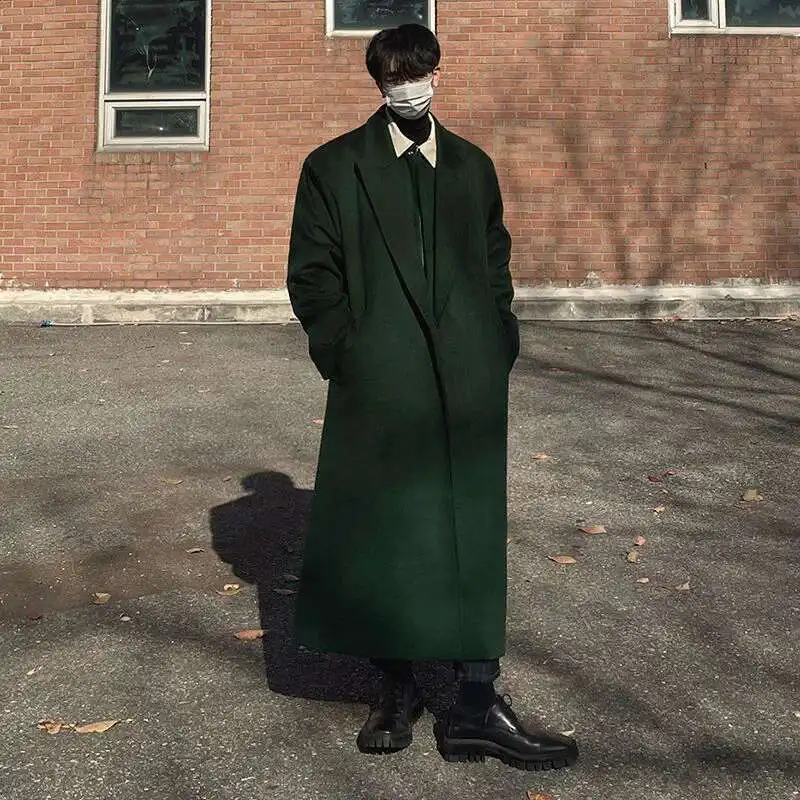
When layering, maintaining clean lines prevents the silhouette from becoming bulky or shapeless. Thinner knits generally layer more effectively than chunky options, particularly under more structured overcoats. The guide to full coat length provides valuable insights into how different coat proportions accommodate various layering approaches.
A common layering mistake is adding too many bulky items, which can restrict movement and create an unflatteringly thick appearance. Instead, focus on thin, technically efficient layers that provide warmth without excess volume. Modern technical fabrics offer remarkable insulation with minimal bulk, making them excellent base or mid-layers under more traditional overcoats.
The “third piece” concept—adding a vest, cardigan, or light jacket between your shirt and overcoat—elevates simple outfits by creating depth and complexity. This approach works particularly well for transitional seasons when temperature regulation becomes most challenging.
Accessorizing Strategy: Elevating Your Grey Overcoat with Thoughtful Details
The right accessories transform a basic grey overcoat outfit into a thoughtfully composed look with personality and flair. These finishing touches not only add functional benefits but serve as expressions of personal style that distinguish your look from others.
Scarves represent perhaps the most natural accessory pairing for overcoats, offering both practical warmth and visual interest at the focal point of your outfit. For everyday wear, wool scarves in complementary colors or subtle patterns add dimension without overwhelming. Solid-colored options in burgundy, navy, or forest green provide versatile starting points, while plaids, checks, and herringbone patterns introduce texture that complements the coat’s solid color.
When it comes to headwear, the right hat balances style and function while maintaining proportion with your coat. Wool beanies offer the most casual option, perfect for daily wear with jeans and sneakers. Structured wool hats like fedoras or trilbies introduce a more considered elegance, while flat caps split the difference with a smart-casual appeal. Consider your face shape and overall outfit formality when selecting headwear.
For shorter men seeking flattering coat proportions, accessories play a crucial role in creating visual harmony. Vertical elements like scarves and strategic color blocking can enhance height perception while adding style points.
Glove selection depends on both climate needs and desired formality. Leather gloves in brown or black offer classic sophistication and surprising warmth, while wool or technical options provide greater insulation for genuinely cold conditions. The glove length should reach just beyond your coat sleeve cuff to prevent exposed wrists in cold weather.
Bag choices significantly impact your overcoat’s overall aesthetic. For everyday carry, consider these options:
* Leather messenger bags for a business-casual look
* Canvas totes for relaxed weekend style
* Minimalist backpacks in leather or technical materials for practical commuting
* Briefcases for more formal professional settings
Mens Double Breasted Pea Coat, Mens Wool Blend Coat, Mens Wool Pea Coat
Price range: $136.84 through $157.36 Select options This product has multiple variants. The options may be chosen on the product pageMens Cashmere Overcoat, Mens Hooded Winter Coat, Mens Wool Blend Coat
Price range: $128.72 through $139.68 Select options This product has multiple variants. The options may be chosen on the product pageMens Black Overcoat, Mens Black Wool Coat, Mens Wool Overcoat
$339.18 Select options This product has multiple variants. The options may be chosen on the product pageMens Grey Overcoat, Mens Wool Blend Coat, Mens Wool Overcoat
$201.28 Select options This product has multiple variants. The options may be chosen on the product pageMens Herringbone Coat, Mens Long Overcoat, Mens Wool Overcoat
Price range: $197.16 through $203.69 Select options This product has multiple variants. The options may be chosen on the product pageMens Long Overcoat, Mens Topcoats
Price range: $189.40 through $196.88 Select options This product has multiple variants. The options may be chosen on the product page
The most successful accessories complement rather than compete with your overcoat. When in doubt, follow the principle of balanced attention—if your coat has significant texture or pattern, keep accessories relatively simple. Conversely, a solid grey overcoat provides an excellent foundation for more expressive accessory choices.
Caring for Your Investment: Maintenance Tips for Everyday Wear
A quality grey overcoat represents a significant investment, and proper maintenance ensures this investment delivers returns for many years. Regular wear demands consistent care to preserve both appearance and functionality.
Daily maintenance forms the foundation of overcoat longevity. After each wearing, brush the coat with a proper garment brush, paying particular attention to areas that collect dust and debris. This simple habit removes particles that can eventually damage fibers, particularly in wool coats. Always hang your coat on a sturdy, shaped wooden hanger that supports the shoulders and allows air circulation around the garment.
Weekly care rituals address the more moderate signs of wear. Spot cleaning small stains immediately prevents them from setting permanently. For wool coats, steam from a hot shower or a gentle steamer helps remove minor wrinkles and refreshes the fabric without harsh chemical intervention. Pay special attention to common wear areas like collar edges, cuff areas, and pockets.
Seasonal maintenance prepares your coat for extended storage or the next wearing season. Professional cleaning at the end of winter removes accumulated oils and dirt that can attract moths and other pests. Before storage, ensure the coat is completely clean and thoroughly dry, then place it in a breathable garment bag with cedar elements to deter pests.
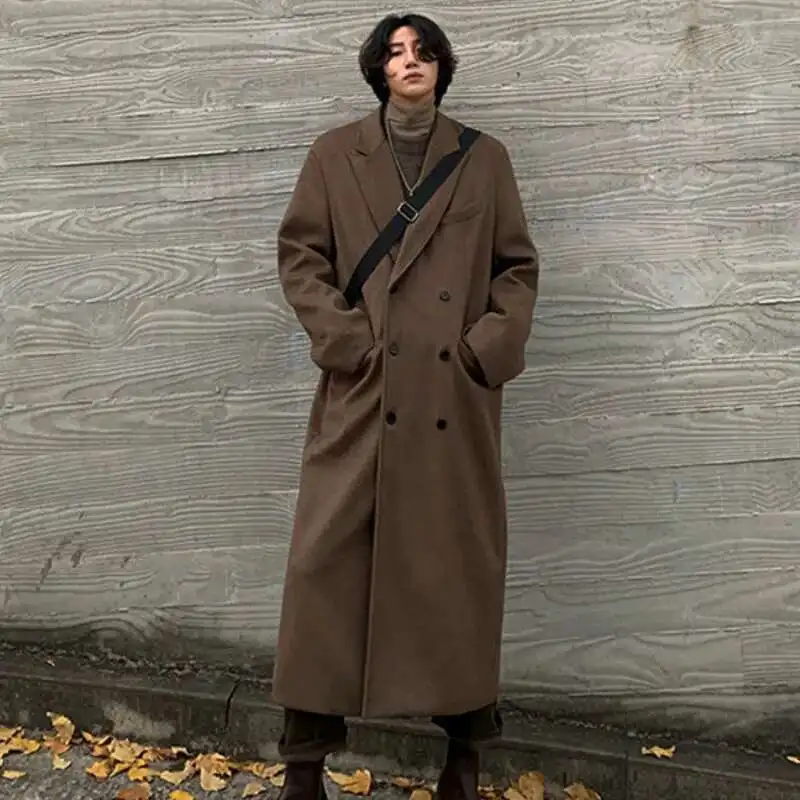
Common trouble spots for grey coats include collar darkening from skin oils, sleeve ends showing wear, and pocket areas developing shine. Regular rotation between coats—if you own multiple options—significantly extends longevity by reducing stress on any single garment. If you wear your overcoat daily, consider investing in two quality pieces rather than one to enable this rotation.
Understanding how coat length affects maintenance helps develop appropriate care routines. Longer coats may require more frequent cleaning at the hem due to contact with legs while walking and potential splashing in wet conditions.
Essential maintenance supplies worth investing in include:
* Quality wooden coat hanger with shaped shoulders
* Natural-bristle garment brush
* Lint roller for quick touch-ups
* Cedar blocks or sachets for storage
* Gentle fabric steamer
Professional cleaning should typically occur once per season for frequently worn coats, though this varies based on wearing conditions and visible soiling. Always select cleaners experienced with fine outerwear, as improper cleaning methods can damage wool and cashmere fibers permanently.
Street Style Inspiration: Real-World Grey Overcoat Excellence
Looking to real-world examples provides both inspiration and practical guidance for your own grey overcoat styling. Street style offers a window into how diverse men with different body types, personal aesthetics, and lifestyles make this versatile piece their own.
The minimalist approach represents one of the most effective grey overcoat styling strategies. This aesthetic features clean lines, restricted color palettes, and precise proportions. Look for examples of monochromatic outfits where varying shades of grey, black, and white create subtle dimension while maintaining cohesion. These looks often succeed through impeccable fit and quality materials rather than bold statements.
Texture players demonstrate how material contrast creates visual interest without requiring bright colors or patterns. These sophisticated combinations might feature a smooth wool overcoat paired with rough denim, nubby knitwear, or suede footwear. The enduring appeal of herringbone coats exemplifies how texture alone can elevate an otherwise simple outfit.
The casual master represents perhaps the most relevant inspiration for everyday overcoat styling. These looks successfully balance the coat’s inherent formality with genuinely casual elements like worn-in jeans, hoodies, and sneakers. The key to their success typically lies in proportion—ensuring the casual elements don’t appear overwhelmed by the coat, but rather complemented by it.
Color enthusiasts showcase how a grey overcoat provides the perfect neutral foundation for more adventurous color play. Whether through vibrant knitwear, boldly colored accessories, or unexpected footwear choices, these looks demonstrate how controlled color adds personality while the grey coat provides sophisticated balance.
Common elements across successful street style examples include:
* Thoughtful proportion between coat length and overall silhouette
* Strategic contrast between formal and casual elements
* Quality basics that match the overcoat’s refinement level
* Personal touches that prevent the look from appearing formulaic
* Confidence in the overall ensemble
These real-world examples prove that grey overcoats truly function as versatile everyday pieces rather than special-occasion garments. They demonstrate practical applications of the principles discussed throughout this article while providing actionable inspiration for your own wardrobe.
Making It Personal: Adapting Grey Overcoat Style to Your Unique Aesthetic
While styling guidelines provide valuable starting points, the most successful grey overcoat looks reflect individual personality and preferences. Adapting these principles to your unique aesthetic creates authentically personal style rather than formulaic outfits.
The first step in personalization is honest assessment of your existing wardrobe and style tendencies. Consider which elements of your current look might pair naturally with a grey overcoat and which might require reconsideration. This reflection isn’t about abandoning your personal style but rather about integrating the overcoat in ways that enhance rather than contradict your established aesthetic.
Different style archetypes can incorporate grey overcoats in distinctive ways:
* For the minimalist: Focus on impeccable fit, subtle texture variations, and tonal color play that creates depth without obvious contrast
* For the classic dresser: Incorporate traditional elements like Oxford shoes, tailored trousers, and quality knitwear while introducing modern proportions
* For the trend-conscious: Use the timeless overcoat as an anchoring piece for more experimental components, creating balance between enduring and ephemeral elements
* For the eclectic dresser: Embrace unexpected combinations where the structured coat provides counterpoint to more playful or unconventional pieces
Personal expression often emerges through the details—the specific accessories you choose, how you adjust the fit, whether you prefer a coat completely buttoned or casually open. These subtle choices communicate individuality within the broader framework of established style principles.
Experimentation remains essential for developing personal style with an overcoat. Try combinations that might initially seem unconventional, note which elements work and which don’t, and refine your approach accordingly. Over time, you’ll develop intuition for successful overcoat styling that aligns with your unique preferences.
Remember that confidence significantly impacts how others perceive your style choices. When you wear combinations that genuinely reflect your personality and preferences—rather than strictly adhering to external rules—your comfort and assurance communicate authenticity that elevates the entire look.
Beyond the Basics: Advanced Grey Overcoat Styling Techniques
For those who have mastered the fundamentals of everyday overcoat styling, advanced techniques open new possibilities for creative expression while maintaining sophistication.
Playing with proportions represents one of the most impactful advanced styling approaches. Oversized overcoats paired with more fitted underlayers create dramatic silhouettes with contemporary appeal. Conversely, cropped overcoats over longer layers introduce unexpected proportional relationships that draw visual interest. These deliberate proportion experiments signal intentionality rather than poor fit.
Tonal layering—creating outfits using multiple shades of the same color family—elevates monochromatic dressing from basic to sophisticated. With grey overcoats, consider building outfits that incorporate charcoal, mid-grey, heather grey, and off-white elements in different textures. This approach creates subtle dimension through shade variation while maintaining a cohesive overall impression.
Pattern mixing introduces visual complexity for the confident dresser. The key to successful pattern combination lies in varying the scale—pairing a subtle herringbone overcoat with a bolder checked shirt, for example. Keep the color palette relatively consistent when mixing patterns to maintain harmony. A grey overcoat provides an excellent foundation for this technique, as its neutrality helps anchor more expressive pattern play.
Advanced wearers might experiment with subverting traditional wearing methods. Consider draping the overcoat cape-style over the shoulders for a fashion-forward statement, rolling sleeves to reveal interesting linings, or layering shorter jackets over the overcoat for avant-garde proportions. These techniques work best in creative environments where fashion experimentation is appreciated.
For color enthusiasts, unexpected combinations create sophisticated tension. Try pairing a grey overcoat with colors traditionally considered clashing, like burgundy and orange, or purple and green—but in muted, sophisticated shades. The coat’s neutrality helps harmonize these combinations while creating memorable visual interest.
Remember that advanced techniques require confidence and contextual awareness. What works beautifully for a creative industry event might feel out of place in more conservative settings. The most sophisticated style practitioners understand not just how to create interesting combinations, but when and where to deploy them appropriately.
FAQ: Common Questions About Everyday Grey Overcoat Style
Can a double-breasted grey overcoat be worn casually?
Absolutely. While traditionally more formal, double-breasted overcoats can work beautifully in casual contexts when paired with relaxed elements like jeans and sneakers. The key is balance—keeping the overall silhouette slightly relaxed rather than rigidly tailored, and ensuring the coat fits properly through the shoulders and chest. Leaving it unbuttoned can also help reduce its formal appearance.
Is a grey overcoat too formal for weekend wear?
Not at all. Grey overcoats have evolved beyond their formal origins to become versatile pieces appropriate for virtually any setting. For weekend wear, simply pair with casual staples like jeans, hoodies, or relaxed knitwear. Choosing slightly more casual footwear—quality sneakers or boots rather than dress shoes—further helps transition the coat into weekend territory.
How do I prevent my grey overcoat from looking like part of a suit?
Create clear separation by avoiding trousers that match your coat too closely in color and texture. Introduce casual elements like denim, textured knitwear, or relaxed footwear that contrast with the coat’s formality. Consider slightly more relaxed fits rather than extremely tailored silhouettes, and experiment with casual styling touches like leaving the coat unbuttoned or adding less formal accessories.
Can I wear a grey overcoat with athletic wear?
Yes, though this requires thoughtful execution. Stick to cleaner, more minimal athletic pieces rather than technical performance wear with excessive logos or details. Monochromatic athletic wear (black, grey, white) tends to pair more successfully with grey overcoats than bright colors or bold patterns. This combination works best in urban settings where high-low contrasts are more commonly accepted.
What’s the most versatile shade of grey for an everyday overcoat?
A medium grey typically offers maximum versatility. This middle-range shade works well across seasons, pairs easily with both light and dark colors, and shows less visible soiling than lighter greys while appearing less formal than charcoal. If purchasing your first grey overcoat, mid-grey represents the safest investment with the greatest styling range.
How do I care for my grey overcoat after getting caught in rain?
Hang the coat on a proper wooden hanger away from direct heat sources and allow it to dry naturally at room temperature. Once dry, gently brush with a clothes brush to restore the nap of the fabric. For wool coats, light steaming helps eliminate any musty odors. If the coat is heavily soaked, consider professional cleaning to prevent water stains or fabric distortion, particularly for wool and cashmere blends.
Is it worth investing in multiple grey overcoats?
For those who wear overcoats regularly, having two or more grey options in different shades, weights, or styles can be worthwhile. This allows rotation between coats (extending their lifespan), adaptation to different weather conditions, and greater styling versatility. Consider variations like a heavier charcoal coat for deep winter, a mid-weight medium grey for versatility, or a herringbone pattern for visual interest.
Is a Grey Overcoat Worth the Investment for Casual Style?
After exploring the remarkable versatility of grey overcoats for everyday wear, the question remains: Does this investment make sense for your casual wardrobe? The answer depends on your lifestyle, climate, and personal style preferences—but for many men, the benefits are compelling.
The primary advantage of investing in a quality grey overcoat lies in its transformative power. Few other garments can so dramatically elevate simple casual outfits while remaining genuinely practical for daily wear. This dual functionality—being both pragmatically useful and stylistically impactful—represents exceptional value that justifies the initial investment.
From a practical perspective, consider these pros and cons:
Pros:
* Exceptional versatility across various outfit styles and formality levels
* Timeless design that resists trend cycles, ensuring years of relevance
* Ability to instantly elevate simple casual basics
* Practical functionality for cold weather protection
* Strong cost-per-wear value through regular use
Cons:
* Initial investment cost higher than more casual outerwear options
* Regular maintenance requirements to preserve appearance
* Potential climate limitations in very warm or rainy regions
* Storage considerations during off-seasons
For those living in milder climates or very casual environments, lighter alternatives like unstructured wool topcoats, car coats, or even well-designed wool shirt-jackets might represent more practical options. These pieces retain some of the grey overcoat’s elevating qualities while offering greater alignment with warmer conditions or extremely casual contexts.
When calculating the true value of a grey overcoat investment, consider the cost-per-wear equation: divide the purchase price by the estimated number of wears over the garment’s lifetime. Quality overcoats can easily provide 10+ years of regular seasonal wear, making even higher-priced options surprisingly economical when viewed through this lens.
Ultimately, a grey overcoat represents one of the most versatile and enduring investments a style-conscious man can make. Its unique ability to bridge formal and casual contexts while providing genuine functionality makes it not merely a fashion statement, but a practical cornerstone of a thoughtful wardrobe. For those seeking the perfect balance of sophistication and everyday utility, the grey overcoat truly delivers as the secret to effortless everyday style.

